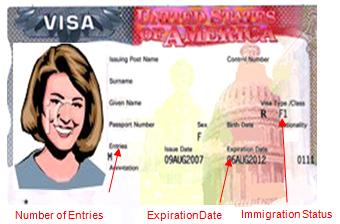In a notable shift signaling potential challenges for international student enrollment, the issuance of F-1 and J-1 student visas experienced a significant decline in May, according to recent data. This downturn, highlighted in a report by Inside Higher Ed, raises questions about the factors influencing visa approvals and the implications for U.S. higher education institutions that depend on a steady influx of global talent. As universities grapple with these trends, stakeholders are closely monitoring how changes in visa issuance might affect academic programs, campus diversity, and the broader international education landscape.
F-1 and J-1 Visa Issuances Decline Signals Potential Challenges for International Student Enrollment
Recent data from the U.S. Department of State reveals a significant downturn in the issuance of F-1 and J-1 visas during May, highlighting emerging obstacles for international student recruitment. Compared to previous years, the volume of newly granted visas for academic and exchange visitors has dropped by nearly 15%, suggesting that global mobility challenges and evolving immigration policies might be curtailing student inflow. Universities, particularly those heavily reliant on international enrollment, face the prospect of tightened talent pipelines and potential financial shortfalls.
Key factors driving this decline include:
- Heightened scrutiny during visa interviews and longer processing times at U.S. consulates worldwide
- Geopolitical tensions and travel restrictions impacting countries with traditionally high student populations
- Increased competition from other English-speaking study destinations offering more flexible visa options
| Visa Type | May 2023 | May 2024 | % Change |
|---|---|---|---|
| F-1 Student Visa | 20,500 | 17,400 | -15.1% |
| J-1 Exchange Visitor Visa | 8,700 | 7,450 | -14.4% |
Analyzing Factors Contributing to the May Drop in Student Visa Approvals
The unexpected decline in F-1 and J-1 student visa approvals in May can be traced to a combination of domestic and international factors. Heightened security protocols at U.S. consulates, alongside lingering pandemic-related travel restrictions in key source countries, have slowed processing times considerably. Additionally, fluctuations in consular staffing and the prioritization of non-student visa categories played a significant role in the slowdown.
Economic and geopolitical tensions have also contributed to the drop. Many prospective students from regions experiencing instability have postponed their applications or opted for alternative destinations. Key elements influencing the decrease include:
- Increased visa interview wait times due to reduced staff capacity.
- Travel bans and public health concerns affecting certain countries.
- Shifts in U.S. foreign policy impacting student mobility.
- Rising competition from other English-speaking study destinations.
| Factor | Impact |
|---|---|
| Security Protocols | High |
| Staffing Shortages | Medium |
| Travel Restrictions | High |
| Geopolitical Tensions | Medium |
| Alternative Destinations | Low |
Impact of Visa Issuance Trends on U.S. Higher Education Institutions and International Students
Recent data reflecting a decline in F-1 and J-1 visa issuances signals a challenging period ahead for U.S. higher education institutions heavily reliant on international students. Universities may face not only a dip in tuition revenue but also a reduction in the cultural and academic diversity that these students contribute to campus life. Several contributing factors include stricter visa policies, global geopolitical tensions, and ongoing public health concerns, all of which have dampened international student enthusiasm and complicated their ability to pursue studies in the U.S.
Potential consequences for campuses and students:
- Decreased enrollment rates among international cohorts, impacting departmental funding and research projects.
- Challenges in maintaining vibrant, cross-cultural learning environments.
- Strain on student support services tailored to meet the needs of international populations.
| Visa Category | May Issuances 2023 | May Issuances 2024 | % Change |
|---|---|---|---|
| F-1 Student Visa | 28,500 | 22,100 | -22.5% |
| J-1 Exchange Visitor Visa | 7,800 | 6,500 | -16.7% |
Policy Recommendations to Reverse Decline and Support International Student Mobility
To effectively counter the recent downturn in F-1 and J-1 visa issuances, policymakers must adopt a multifaceted approach prioritizing accessibility and transparency. Streamlining the visa application process could reduce administrative burdens and long waiting times that currently discourage international students. Embassies and consulates should implement more consistent interview scheduling and expedite background checks without compromising security. Additionally, targeted communication campaigns aimed at dispelling misinformation and promoting the benefits of U.S. education abroad will help rebuild trust within key student markets.
Furthermore, fostering stronger collaboration between educational institutions, government agencies, and international partners remains crucial. Recommended initiatives include:
- Enhancing support services for prospective students, such as pre-arrival orientations and virtual advising.
- Expanding scholarship programs that alleviate financial barriers, especially for students from underrepresented regions.
- Updating regulatory frameworks to encourage innovation in study and research exchange programs.
| Policy Area | Proposed Action | Expected Outcome |
|---|---|---|
| Visa Processing | Faster interview scheduling | Reduced wait times |
| Financial Aid | More scholarships | Increased enrollment |
| Student Support | Virtual advising programs | Higher retention rates |
Wrapping Up
The recent decline in F-1 and J-1 student visa issuances in May signals ongoing challenges within the international education landscape. As policymakers and educational institutions navigate these shifts, understanding the underlying factors and potential long-term impacts remains critical. Stakeholders will be watching closely in the coming months to see how trends evolve and what measures might be implemented to support the resurgence of global student mobility.




